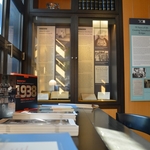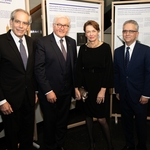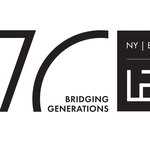Exhibits: The Story of the Kitchener Camp, and Crossing the Ocean
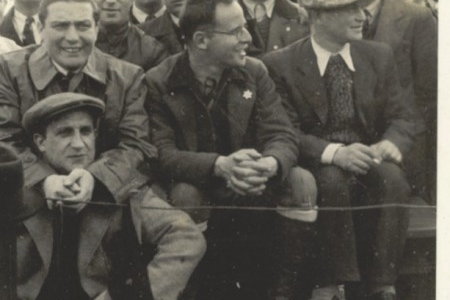
- Datum
- Do., 14. Mär. 2024
In January 2024, LBI presented the US premiere of the exhibition Leave to Land in the Katherine and Clifford H. Goldsmith Gallery at the Center for Jewish History. In April, a new exhibit, Crossing the Ocean, will look back at multiple waves of German-Jewish immigration to the United States under diff erent immigration and border regimes.
Leave to Land. The Jewish Men and Boys who Found a Safe Haven at Kitchener Camp documents an extraordinary action that saved 4,000 Jewish men from Germany, Austria, Poland, and Czechoslovakia. On the eve of WWII, a coalition of the same Jewish aid organizations that organized the Kindertransport arranged for the men to enter the United Kingdom and stay at Kitchener Camp in Sandwich, Kent.
This story was largely forgotten, and The Leave to Land is based on extensive original research by Clare Weissenberg, whose own father found refuge at Kitchener Camp after his imprisonment at Dachau. Weissenberg founded The Kitchener Camp Project, an online resource about Kitchener Camp. Through the website, Weissenberg connected with descendants and researchers around the world who provided additional information and artefacts that became part of the exhibition. The exhibition opening on January 31, 2024 brought together numerous descendants of the Kitchener Camp men, who shared their family stories during the panel discussion and reception.
Dan Green, CEO of World ORT, sent a video greeting on behalf of ORT, the 140 year-old network of Jewish vocational schools from which many of the Kitchener men were recruited.
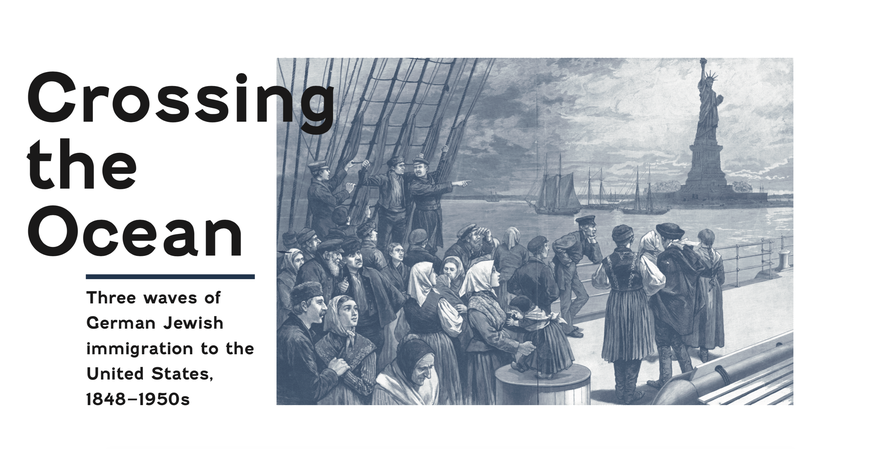
A few months later, LBI will present Crossing the Ocean. Three Waves of German Jewish Immigration to the United States. Based on personal accounts from the LBI Archives, this exhibition explores how the experience of German-speaking Jews coming to America changed between the 1840s and 1950s.
In addition to examining the changing practical considerations of immigration to the US, the exhibition focuses on the role of transnational contacts between past and prospective immigrants. Although the legal context changed multiple times in this period, the strength of one’s contacts in the United States could make or break an immigration attempt.
The exhibit identifies three waves of immigration: the 19th century, 1933–1941, and post-World War II. In the year of the 100th Anniversary of the Immigration Act of 1924, which virtually stopped mass immigration to the United States for two generations, immigration, particularly of refugees, is still an acute problem of world affairs.
The exhibit will have an official opening during the symposium organized by the Center for Jewish History on April 7, 2024, Reconsidering Jewish Migration to the United States. A Century of Controversy.
From LBI News No. 117
Aktuelles

